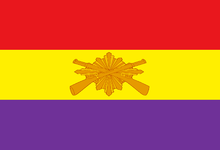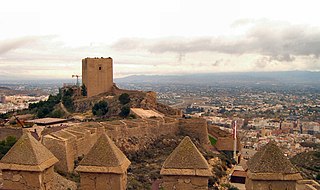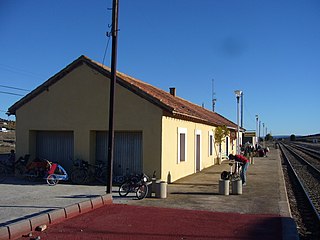
The Carabineros was an armed carabiniers force of Spain under both the monarchy and the Second Republic. The formal mission of this paramilitary gendarmerie was to patrol the coasts and borders of the country, operating against fraud and smuggling. As such the Carabineros performed the dual roles of frontier guards and customs officials.
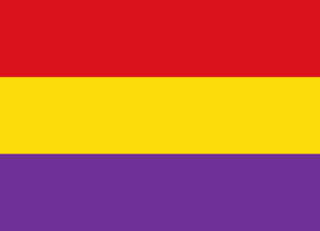
The Second Mixed Brigade, was a mixed brigade of the Spanish Republican Army in the Spanish Civil War. It was formed in October 1936 as a result of the reorganization of the Spanish Republican Armed forces.

The 225th Mixed Brigade, was a mixed brigade of the Spanish Republican Army in the Spanish Civil War. It was formed in the summer of 1937 in Valencia with units belonging to the Eastern Coastal Defence and had four battalions, the 897, 898, 899 and 900.

The 227th Mixed Brigade, was a mixed brigade of the Spanish Republican Army in the Spanish Civil War. It was formed in the spring of 1938 in Catalonia and had four battalions, the 905, 906, 907 and 908.

The 226th Mixed Brigade, was a mixed brigade of the Spanish Republican Army in the Spanish Civil War. Part of its forces had belonged to the former Bautista Garcet Battalion, which had distinguished itself in the combats of the Córdoba offensive at the beginning of the Civil War. Its formation began in August 1937 in Catalonia, but it was delayed for a long time, the brigade not becoming fully operational until 1938. It had four battalions, the 901, 902, 903 and 904.

The 222nd Mixed Brigade, was a mixed brigade of the Spanish Republican Army in the Spanish Civil War. It was formed in the summer of 1937 with battalions of the Carabineros corps. Its only commander was the Carabineros Lieutenant Tiburcio Díaz Carrasco.

The 242nd Mixed Brigade, was a short-lived mixed brigade of the Spanish Republican Army in the Spanish Civil War.

The 228th Mixed Brigade, was a short-lived mixed brigade of the Spanish Republican Army in the Spanish Civil War. It was formed in the last months of the Civil War with battalions belonging to the Carabineros corps. Its first and only leader was the Carabineros Commander Miguel Bascuñana Sánchez.

The 3rd Mixed Brigade, was one of the earliest mixed brigades of the Spanish Republican Army in the Spanish Civil War. It was formed in the fall of 1936 with battalions of the Carabineros corps and saw major action right away in the Defence of Madrid. This brigade also included female combatants —such as Sergeant "La Chata"— and would take part in most of the major battles of the Spanish Civil War, except in the Battle of Jarama.

The 109th Mixed Brigade, was a mixed brigade of the Spanish Republican Army in the Spanish Civil War. It was formed in the spring of 1937 in Utiel with four battalions, the 433, 434, 435 and 436.

The 86th Mixed Brigade, was a mixed brigade of the Spanish Republican Army in the Spanish Civil War. It was formed in March 1937 with battalions of the Carabineros corps. Until its demise it operated mostly in the Sierra Morena area, at the southern limits of the territory held by the Republic.

The 8th Mixed Brigade was a mixed brigade of the Spanish Republican Army in the Spanish Civil War. It was formed at the beginning of the Defence of Madrid in early spring 1937 with battalions of the Carabineros corps and it remained in Madrid all along the war. Its first commander was Carabineros Lt. Colonel Enrique del Castillo Bravo who was succeeded by Carabineros Commanders Emeterio Jarillo Orgaz and José Casted Sena.

The 49th Mixed Brigade, was a mixed brigade of the Spanish Republican Army in the Spanish Civil War. It was formed in February 1937 at the Guadalajara Front.

The 84th Mixed Brigade, was a mixed brigade of the Spanish Republican Army in the Spanish Civil War. It was formed in March 1937 with battalions of the Iron Column and was disbanded after the tragic events at Mora de Rubielos that followed the brigade's Battle of Teruel December combats in harsh winter conditions.

The 42nd Division was a division of the Spanish Republican Army in the Spanish Civil War.

The 1st Division was a division of the Spanish Republican Army in the Spanish Civil War.

The 2nd Division was a division of the Spanish Republican Army in the Spanish Civil War.
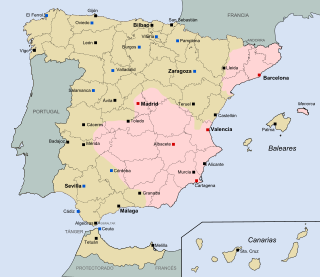
The 66th Mixed Brigade was a unit of the Popular Army of the Republic that participated in the Spanish Civil War. Born in the context of the Battle of Madrid, took part in the Battle of Jarama and the fronts of Guadalajara and Extremadura.(Spanish: 42.ª División) was a division of the Spanish Republican Army in the Spanish Civil War. This unit was involved in the Battle of Jarama —part of the Battle of Madrid, as well as in the Battle of Peñarroya, suffering grievous losses in both battles.

The 17th Mixed Brigade was a unit of the Popular Army of the Republic that participated in the Spanish Civil War. Born in the context of the Battle of Madrid, took part in the Battle of Jarama and the fronts of Guadalajara.(Spanish: 15.ª División) was a division of the Spanish Republican Army in the Spanish Civil War. This unit was involved in the Battle of Jarama —and great part of the Battle of Madrid, suffering grievous losses in both battles.




